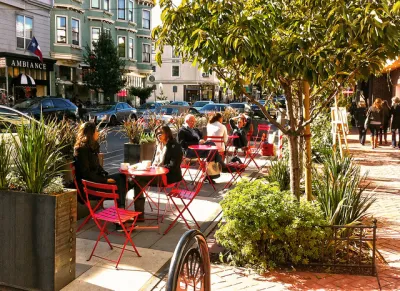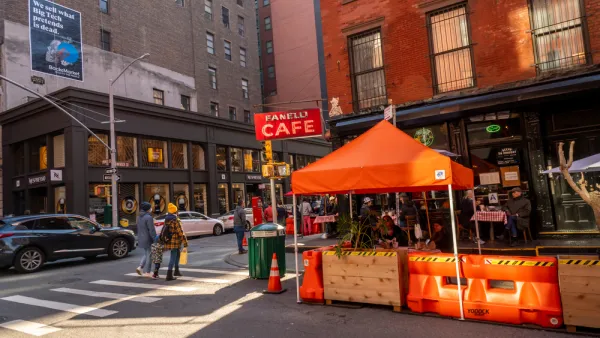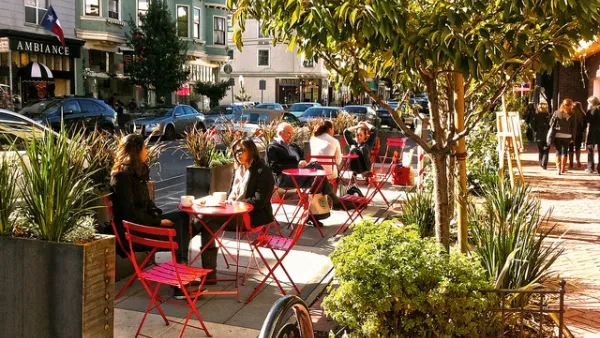The social and economic upheaval of the last two years accelerated a shift in thinking about how we use public space and organize the urban realm.

After decades of glacial progress on shifting public space away from a focus on cars, the disruption brought on by COVID-19 led to a radical rethinking of how we use roads and sidewalks. As Adam Rogers writes,
The virus—and specifically the understanding that as an aerosol it spread more easily in poorly ventilated spaces—changed something fundamental about urban life. The expansion of restaurants to curbside spaces and the closure of city streets to automobiles began in 2020, but in 2021 those alterations felt like a new phase in a decades-old cold war over the look and feel of the modern city.
Although the pandemic also halted progress that cities were making on increasing density and boosting public transit use, Rogers writes, the focus on social distancing and access to the outdoors brought a new urgency to reinventing the right-of-way for more people-oriented uses and encouraging walkable, bikeable neighborhoods. But this hasn't come without its own challenges: as cities scramble to create new regulatory frameworks for pandemic-era projects, the process often becomes onerous and expensive for small businesses and organizations. Meanwhile, disability advocates caution that some parklets impede access for wheelchairs, and public space proponents criticize dining setups for using public right-of-way for private businesses.
Nevertheless, Rogers concludes optimistically, "this new image of the city offers a sense of possibility—of hope, even—in the fight against climate change and inequality."
FULL STORY: The Pandemic Might Have Redesigned Cities Forever

National Parks Layoffs Will Cause Communities to Lose Billions
Thousands of essential park workers were laid off this week, just before the busy spring break season.

Retro-silient?: America’s First “Eco-burb,” The Woodlands Turns 50
A master-planned community north of Houston offers lessons on green infrastructure and resilient design, but falls short of its founder’s lofty affordability and walkability goals.

Delivering for America Plan Will Downgrade Mail Service in at Least 49.5 Percent of Zip Codes
Republican and Democrat lawmakers criticize the plan for its disproportionate negative impact on rural communities.

Test News Post 1
This is a summary

Test News Headline 46
Test for the image on the front page.

Balancing Bombs and Butterflies: How the National Guard Protects a Rare Species
The National Guard at Fort Indiantown Gap uses GIS technology and land management strategies to balance military training with conservation efforts, ensuring the survival of the rare eastern regal fritillary butterfly.
Urban Design for Planners 1: Software Tools
This six-course series explores essential urban design concepts using open source software and equips planners with the tools they need to participate fully in the urban design process.
Planning for Universal Design
Learn the tools for implementing Universal Design in planning regulations.
EMC Planning Group, Inc.
Planetizen
Planetizen
Mpact (formerly Rail~Volution)
Great Falls Development Authority, Inc.
HUDs Office of Policy Development and Research
NYU Wagner Graduate School of Public Service




























